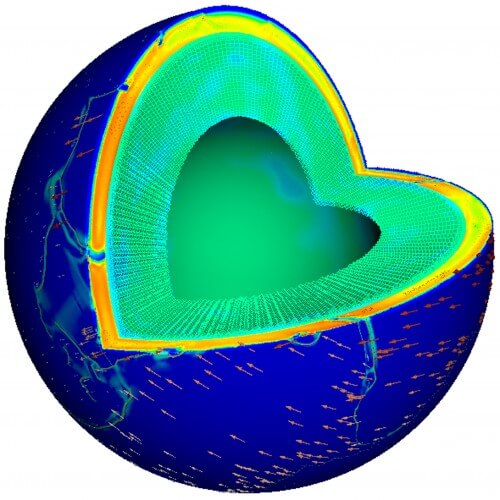The researchers were able to develop an efficient algorithm using a mathematical approach known as an "implicit solution" and ran it on a "Sequoia", IBM's BlueGene/Q computer, installed at the Lawrence Livermore National Laboratory, which is currently one of the fastest computers in the world

Researchers from IBM's research laboratories, and scientists from the Universities of Texas, New York and the California Institute of Technology, won the 2015 Gordon Bell Prize for their success in building a realistic simulation of the internal forces in the Earth's core, which are behind the movement of the tectonic plates. The work may be a significant step towards a better understanding of earthquakes and volcanic activity.
The research breakthrough was made possible thanks to advanced algorithms running on "Sequoia", an IBM BlueGene/Q computer, installed in the National Laboratory named after Lawrence Livermore, which is currently one of the fastest computers in the world.
The team of researchers developed innovative algorithms within a mathematical approach known as the "implicit solver", in order to present a realistic simulation of the Earth's features, with an unprecedented level of resolution and accuracy. Using these models, the researchers were able to predict the movements of the tectonic plates that make up the Earth's surface and the forces acting on them - while simulating the flow of the core mantle. Performing the simulation requires handling more than 600 billion nonlinear equations and its completion is considered a milestone in the history of computer science.
The Sequoia system is built from 96 BlueGene/Q base cabinets, and offers a theoretical maximum processing rate of 20.1 petaflops. Each base cabinet includes 1,024 processing nodes, each of which has a 16-core POWER chip, designed for Big Data processing and operating at a speed of 1.6 GHz.
The code written by the team members recorded unprecedented parallel work efficiency, when he was able to present an efficiency rate of 97% when scaling the system up to work on 1.6 million cores - here, too, a world record. This achievement was born thanks to a rethinking of the entire processing model, starting from the level of the mathematical model to the numerical algorithms, when applied in a massively parallel environment. The team built the algorithm in a way that allows it to handle well the scaling of the overall processing of the processes going on in the Earth's crust, making the most of the unique parallel architecture of the BlueGene/Q supercomputer.
Although the movement of the tectonic plates and the processes that occur in the earth's crust and in the layer of magma close to it are a major cause of earthquakes, volcanic eruptions and tsunami waves, some of the basic principles behind these phenomena are still a puzzle to researchers. In fact, understanding the field was presented as one of the ten greatest challenges of scientific research, in a list defined by the US National Academy of Sciences.
The Gordon Bell Prize is awarded annually to the greatest scientific achievement in the application of parallel computing to solving science, engineering and large-scale data analytics challenges. The award bears the name of Gordon Bell, one of the pioneers of high-performance computing and parallel computing.

One response
Such progress in computing - handling 600 billion non-linear equations (probably flow) using the finite element method probably challenges analytical mathematics - the one that develops macroscopic laws, which is more elegant.
On the other hand, to this day they have not been able to predict earthquakes, because there is no visibility of the plate movement processes on the boiling trend. If from this theoretical methods are developed which exemplify the sites in the Kadhaa and fix a route - after all, like any non-linear problem it diverges from the predicted solution, perhaps it will be possible to have a relatively real-time record of the displacement. Another direction of investigation - you can speed up the simulation and try to see the future.
IBM has a great talent for making revolutions in computing and inventing avenues of profit for it to finance the continuation of the research. Looks impressive.